Last spring, Tina Barney had her first solo show with Paul Kasmin Gallery, entitled “Four Decades.” On view were works from throughout her career, both works that we expected (photos of intimate moments captured inside the homes of America’s social elite) and some that we didn’t (such as from a period of nudes and her “Players” series). The artist walked us around the show, talking candidly about her practice, her career, the struggles of digital photography, and her new focus: sports.
WHITEWALL: Do you see this exhibition as a retrospective?
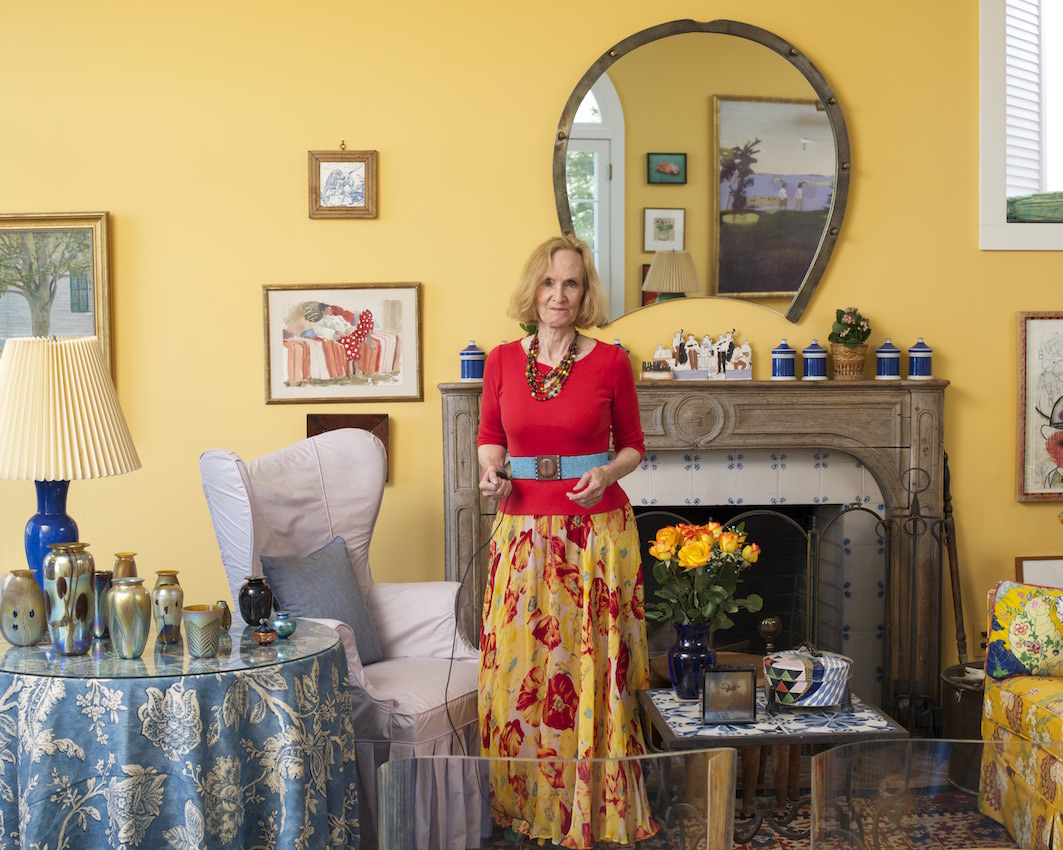
48 x 60 inches
© Tina Barney, Courtesy of Paul Kasmin Gallery
TINA BARNEY: No. Maybe Paul did—you’ll have to ask him. I was just happy to get my work out there. I kept thinking that people think that they have seen my work but they really haven’t. Especially when you are talking about the eighties. And there were a lot of other things that happened. The “Europeans” show was big and a lot of those pictures were not shown in America. And then I had a show called “Small Towns,” but Hurricane Sandy happened and I don’t think that anybody saw that show. So it was great to get everything out again.
I love mixing up my work and not putting them together formally instead of by subject matter.
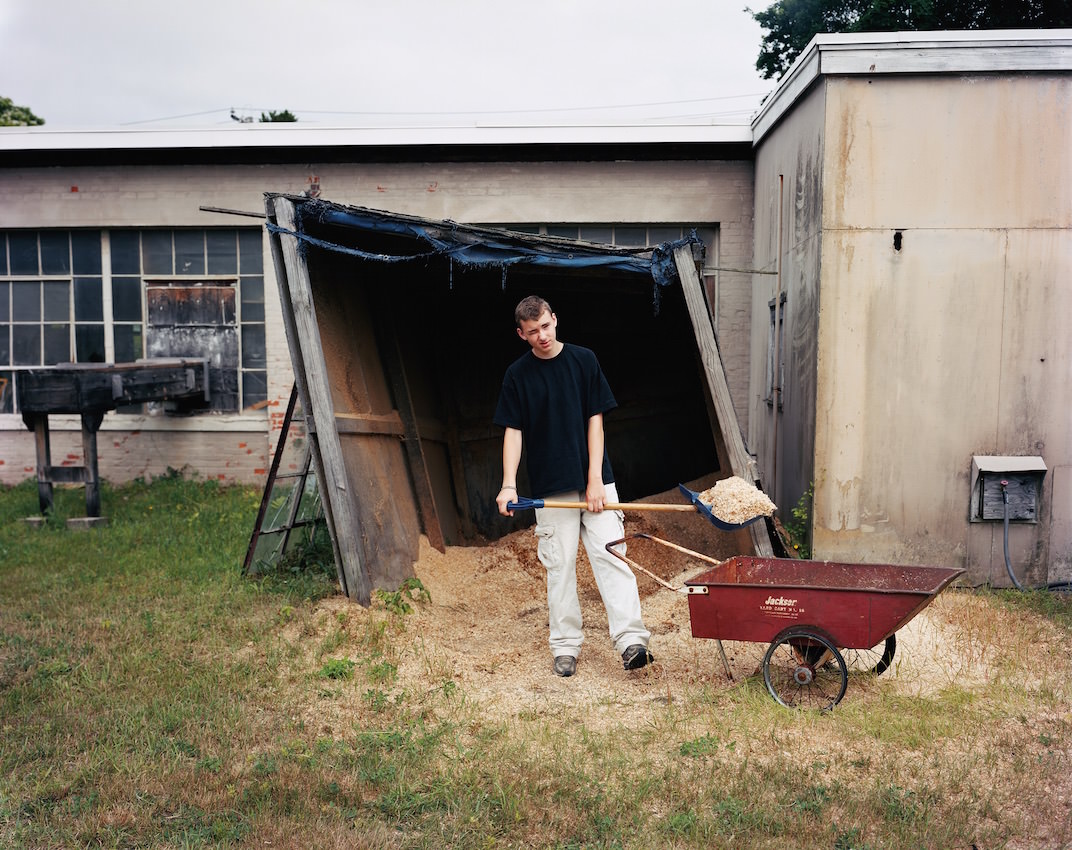
© Tina Barney, Courtesy of Paul Kasmin Gallery
WW: Is this the first show where you’ve really mixed up your series and subject matter?
TB: Well my book Players [2010] was really about that, but nobody got it. That was when I tried to say, “Stop trying to figure out who this is, when it was done, why I did it,” mix the pictures up formally. People didn’t understand it, I don’t think.
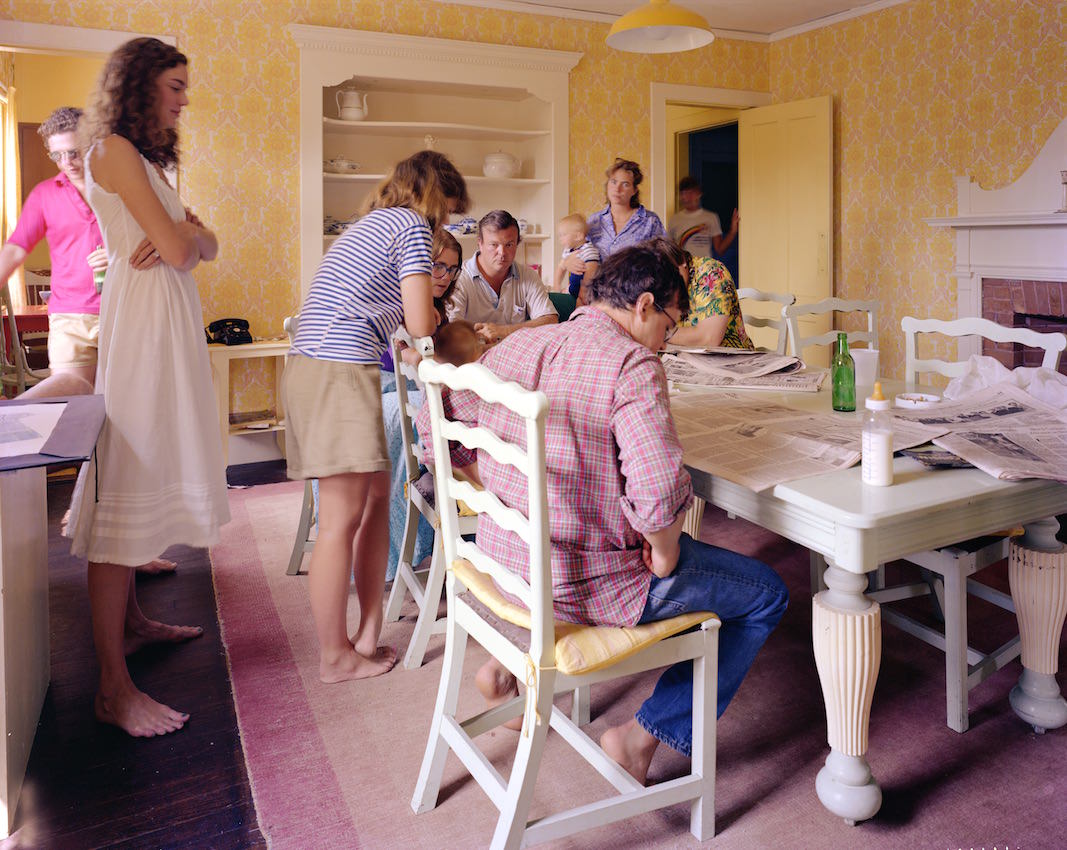
Tina Barney
The Wheelbarrow
2005
Chromogenic color print
70 x 88 inches
© Tina Barney, Courtesy of Paul Kasmin Gallery
I think that also I get not bored, but I feel like there is a very strict history in photography books that comes with putting everything in categories. You know, “pictures of the street,” “girls with blue dresses on,” and that again is another reason why I wanted to do Players.
It is very educational for me to actually see a real print, lit up, in the context of other work. I think that one of things that has greatly changed in photography is resolution, which is focus. Back then, using film, 4 by 5, using an 8 by 10 negative, there were many different technical things. These were long exposures, asking people to hold still.
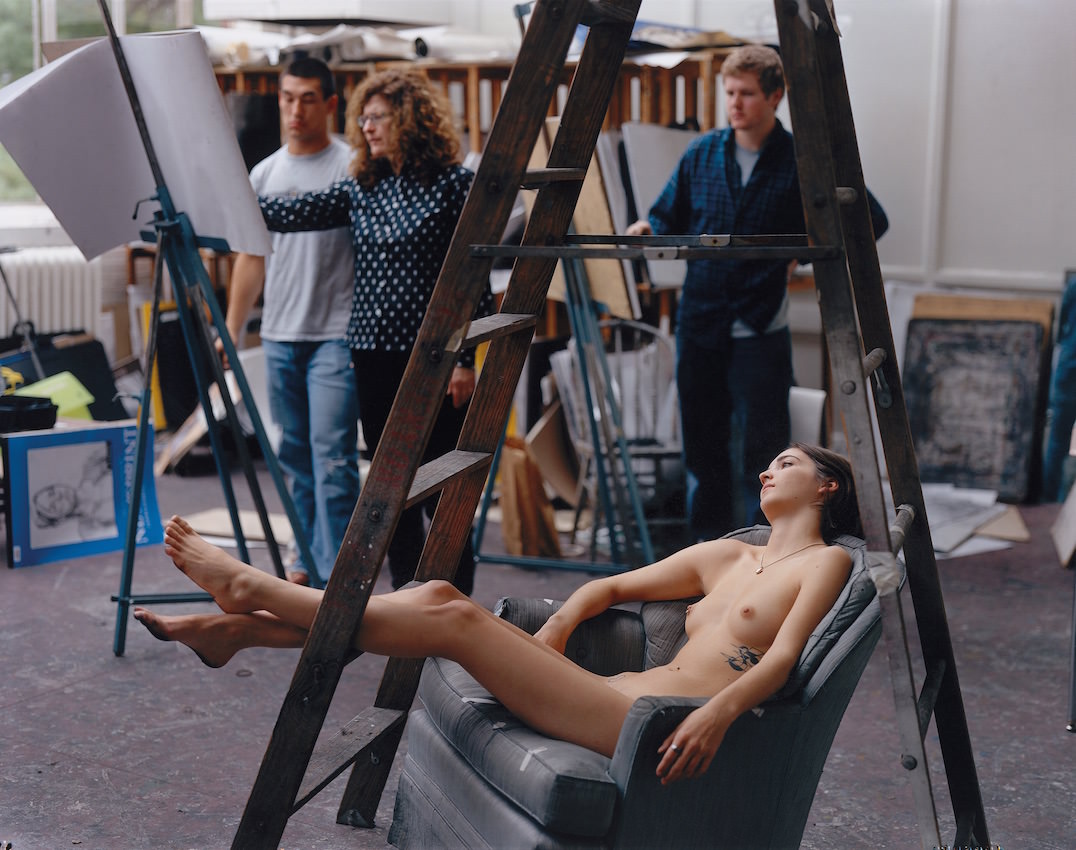
Tina Barney
Sunday New York Times
1982
Chromogenic color print
WW: But also asking them to look candid.
TB: It is very difficult.
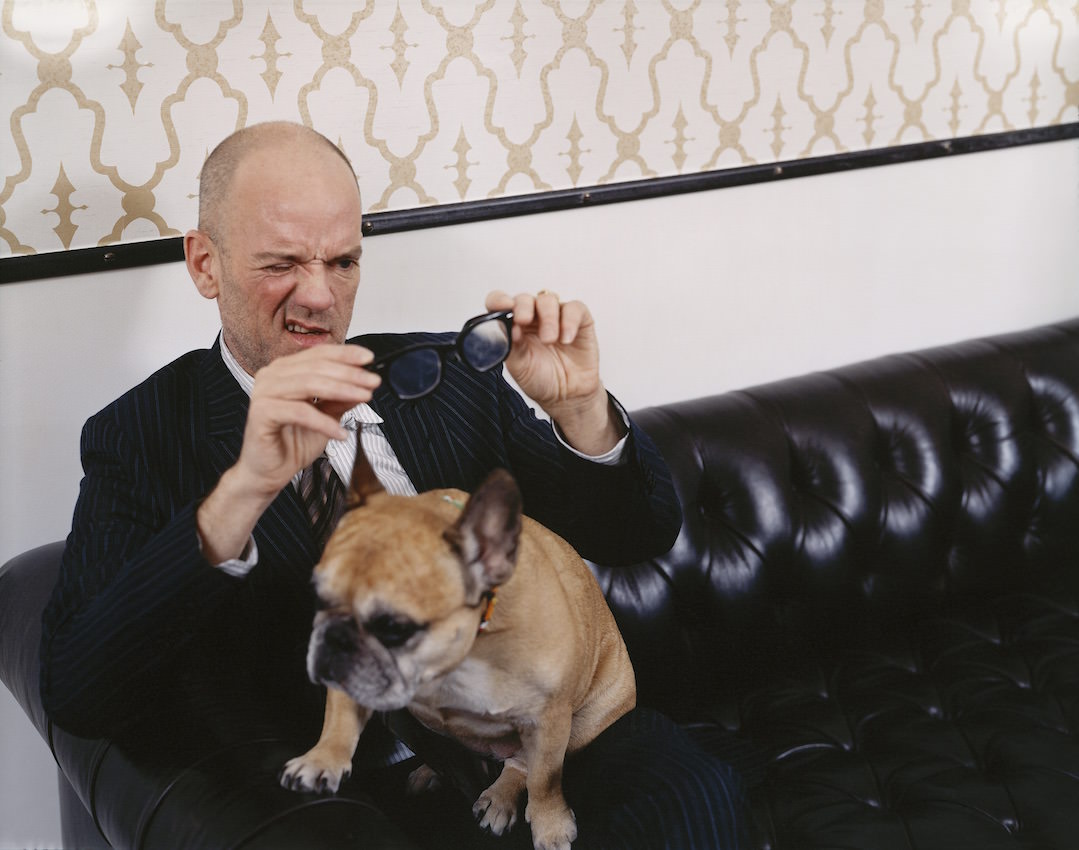
48 x 60 inches
© Tina Barney, Courtesy of Paul Kasmin Gallery
WW: In the eighties it seems like Sunday New York Times [1982] put you on the map in the photography world.
TB: That was one of my pivotal moments. I tell this story over and over. I knew the underlying theme was that the American family was growing too far apart. This is the first time I remember saying “Stand here,” “Stand there,” very different from standing at a birthday party doing your family being like, “Hey Joey, go stand next to your dad.” I was very serious, and the other thing was that I had a tripod.
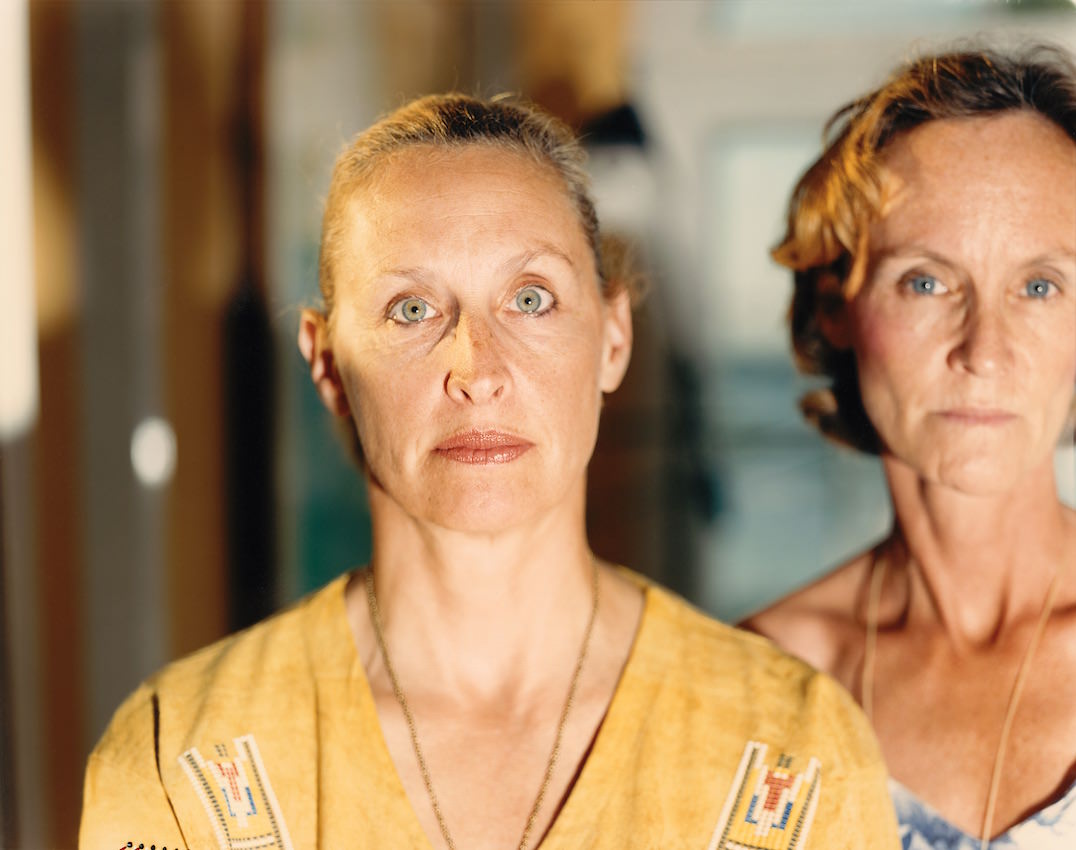
Tina Barney
The Nude Model
2010
Chromogenic color print
48 x 60 inches
© Tina Barney, Courtesy of Paul Kasmin Gallery
WW: Which might also make people take you more seriously?
TB: Right, except they were my family. I used a 4 by 5 and was kind of learning on my own. It is a very complicated camera and I was really frustrated with the stiffness I was getting. I am very interested in Italian Renaissance and Dutch painting. I was bringing the family together and using those devices to explain and say something. I wanted to bring the viewer’s eye in to create space. I learned that your vantage point, where you stand, is the most important of all. It reflects your attitude on the situation. Granted, this is chaos [referring to Sunday New York Times]—the phones ringing; people are yelling, screaming. But I told Michael to sit at the head of the table because I wanted the father to sit at the head of the table.
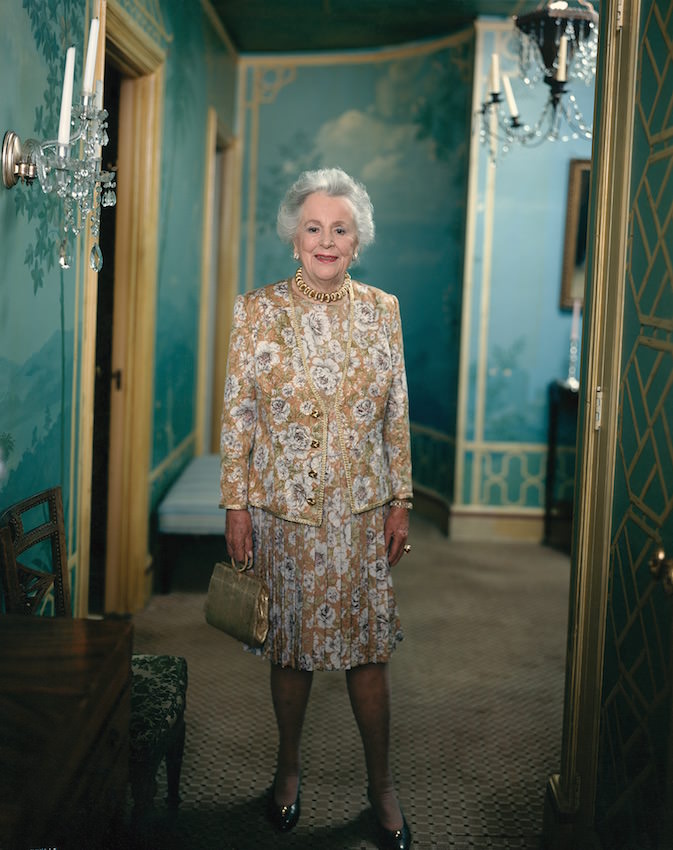
Tina Barney
Michael Stipe, Room 100
2008
Chromogenic color print
When I am talking about all this directing that I am doing, we are talking about seconds. Not an hour, because I know that they are going to leave and go somewhere else.
WW: You photographed friends and family for years. We see your sister and other relatives over and over. But for your “The Europeans” series, which is still touring, you photographed strangers. Why did you want to step outside of what was familiar to you?
TB: I was especially tired of being home, and someone said, “Why don’t you apply to the American Academy in Rome and apply for Visiting Artists?” I went there and applied. I had two Italian friends, and they introduced me to their friends and it ended up being an eight-year project. I would go for a month at each time, but these were very formal. I didn’t know the people.
WW: How was that different?
TB: I did not direct them, really. They were very formal and most of the time they would stand still. And the resolution of the pictures were very beautiful.
WW: Is that because the subjects were used to having their portrait taken?
TB: Yes, they had a culture of having a portrait taken, ideas of how you are supposed to look, stand, and act. That is very interesting to me. So these were really successful, and I think it is because they are very beautiful and it has to do with all the textures and the houses, the quality of the interiors, the colors.
WW: Were you looking for that? Or did it just happen, the ornate interiors?
TB: Yeah, I walk in and out [to find the right setting]. I don’t think there was any time where someone said that they didn’t want to do that or “I don’t want to go in there.” So that lasted eight years. And here is “Players,” which is a combination of all the editorial work I have done. I’ve done lots of editorial work. I also did a theater project with Richard Foreman and Wooster Group and the circus. I wanted to mix them up.
WW: What led you to your “Small Towns” series, where you drove around the suburbs in Rhode Island photographing local events and traditions like parades, county fairs, historical reenactments, and barbecues?
TB: that took seven years and it was really hard to find interesting things. Because first of all, it was outside, the colors weren’t that interesting, it was really hard to get strangers to have their pictures taken. Only if it was a Renaissance fair or . . .
WW: Something where they were already performing?
TB: Yeah, they want to be photographed there because that is what they are doing. Renaissance fairs, Civil War reenactments. This was just a young kid working at a factory [referring to The Wheelbarrow, 2005]. I have always been interested in summer jobs, what kids do.
WW: Do you think people have opened up more about having their photograph taken, since we all have cameras on our phone, take photographs ourselves every day . . . ?
TB: Oh, I think that people have gotten worse. People are more guarded, afraid. I find it discouraging sometimes that I do not know what to do. Because I go out there, and I need to have an early sun that dials everything up, and people are like, “What is this?” And I think it scares people. They do not care if my work is in museum and galleries; they really don’t believe that and they really don’t care. So it’s restricting, and anybody in photography knows that there are restrictions, and it is one of the main problems.
WW: Is that why you started with your family?
TB: No, at that time it was so early that I didn’t even think about it. It was just there. That is why. They were there and it was easy access. I only bothered—and I say “bothered”—my extended family members once a year for an hour. And it became more of a big deal when I started using lights in 1987. That’s walking out the door with seven bags of equipment and an assistant. I always thought that was going to change the improv-ness, the casualness, and the capability of everything, but what it really did was free me up because they can move a little more [without having to stand still for the long exposure]. It is a big deal to take a picture. Now I use a digital camera, but I still use lights, I still use a tripod.
WW: At what stage do you know if a photo is successful? Is it from behind the lens, the negative, the darkroom?
TB: Sometimes I know when I have a winner. Usually I know if I’ve gotten one. With digital what is interesting, people are going out and photographing digitally, but very few people make a print, and a print is the truth. And boy oh boy can digital photos look like shit when you make a print. I mean, this is my third year trying. It is like starting from scratch and using a new medium. So I am discouraged with the results most of the time.
The other thing that is very interesting is that—I really want to mention this more because I don’t think it’s mentioned enough—the vantage point where the viewer stands, looking at a photograph today has changed. You see, these look in focus, her lips look in focus here [standing far back from Jill and I, 1993], and then you go up close and they get more soft; they are pixilated. And with digital it is more so. And what is happening with digital is that I do not think that people are walking up as close as they did when they were looking at 19th-century photography. They are not looking as close, and I think it has to do with size all the time.
I do not think that younger generations understand the surface of the photograph and what is happening on that surface. Looking at a beautiful 8-by-10 19th-century photograph, you get up close. I do not think that people are doing that anymore. They are standing back here. So that excites me—what I can do with that medium. I might get frustrated, but I can walk into places that I could never walk in before because [the digital camera I use] is a Nikon. It is just wonderful.
WW: It must be freeing to not have all the gear.
TB: Exactly, and there are still some sacrifices. Anyway, I think one of the sad parts [about digital photography] is I think the paper has a long way to go. It is amazing that they haven’t got that figured out. They have a long way to go.
Also I have black-and-white pictures that are very important to me.
WW: When did you work in black-and-white?
TB: Well, I was doing them along the way and saving them and doing them. And no one ever saw them. Last fall I showed them. I don’t know, people, they just don’t . . .
WW: Do you think they don’t respond as well now because they have expectations of you as a photographer?
TB: I think that they are harder to look at. They are much more serious.
WW: For you, does black-and-white call for different subjects?
TB: I was trying to go to something weird, like go to the Twilight Zone. It was like speaking another language, which was very important to me. I would get tired and sort of take breaks. Let’s say you get tired of your own native tongue; you go and try to learn another language. I love the idea of translation. What does it mean? What is it about?
WW: The devices you use to draw the eye, where you might use a bright color or object, aren’t the same in black-and-white.
TB: You do something else. Whatever that something else is is very interesting.
WW: You talked about how your first photographs fell under this theme of the American family growing apart. I was wondering, too, do you work in themes still? Do you have a new focus?
TB: No, that does not interest me anymore. That is done. What I am thinking about now is sports, and what I am really interested in is narrative or subject matter. I also am more interested in pictures, the more formal elements. I mean, sports is very interesting to me right now. Physically, the idea of the technical and the strategy is very interesting to me.
WW: Are you a sports fan personally?
TB: I am. I started learning how to windsurf when I was trying to learn how to use that 4 by 5. That takes courage and strength, and then there is a technical exteriority or an understanding. Golf is fascinating, and skiing, too. But also the other thing that is very important that comes from my whole personality is the idea of sportsmanship, camaraderie, teamwork, and working together, which comes from tradition, ritual, and family.
WW: So what type of sports are you photographing?
TB: Whatever I can get, but it has to do with visuals. It is totally about the visuals. One of the big obstacles is that most sports are played on some sort of field. Most sports are on green grass that is boring. Then if I try to do that, we have to have some type of lighting. So then the space is important. I thought about a climbing wall, a huge one in Brooklyn, and that was terrific. I end up getting close to the people, and it ends up being portraiture anyway. I am going to try rugby; I am going to try to do whatever I can get. If you have any ideas, let me know. I took some skiing. With so much snow, it was a lot harder to make anything interesting than you can imagine. It is not that easy because there is a lot of white. But I am going to go back again because I learned a lot. I did ice skating, swimming. I do it again, try it again, learn from it. I did fencing—I am so thrilled about it. I can’t even believe what happened.
WW: How long have you been working on this now?
TB: Just this last year.
WW: When do you think you will be ready to show it?
TB: I have to first of all think it is worthy of it. I can show three really good pictures now, and another thing is that I am dying to make them six feet, but I don’t think that it holds up. Unless I make them small pictures, and that is very hard to do.
This is what I love about photography. The ambiguity of subject matter and narrative, the ambiguity of spaces—that is the most interesting of all.
This article is published in Whitewall‘s fall 2015 Fashion Issue out now.









